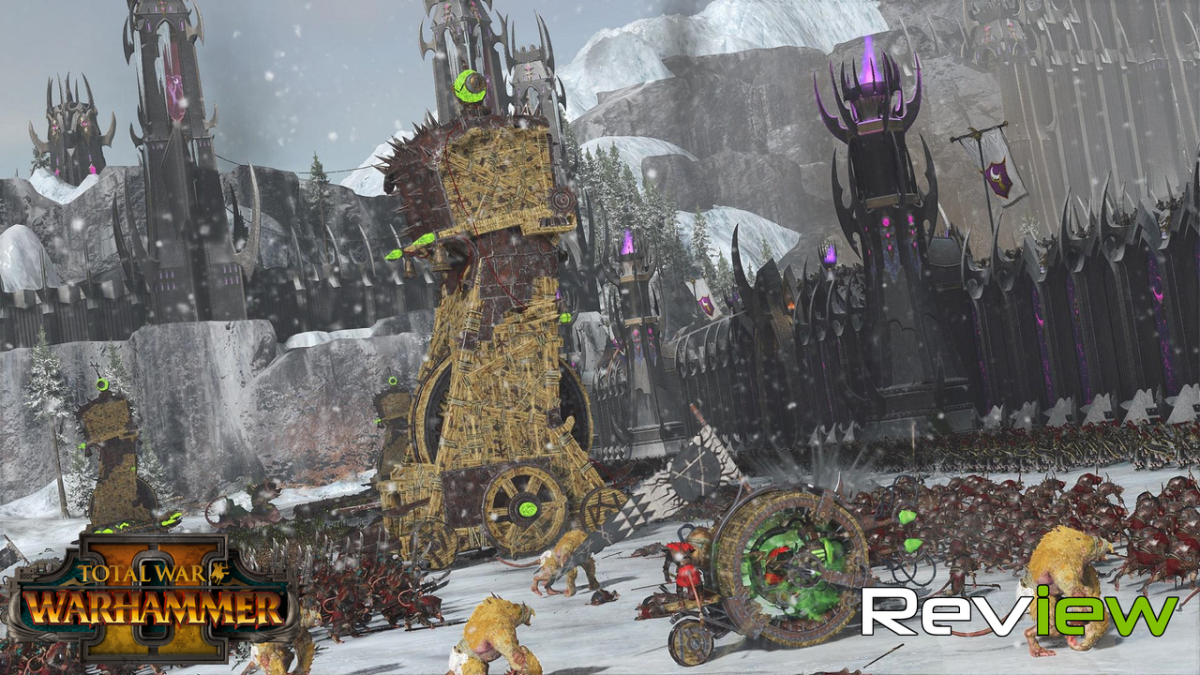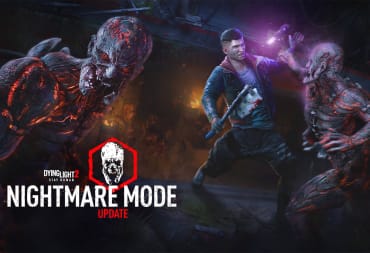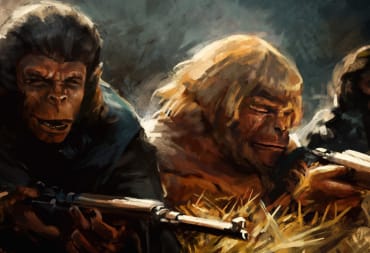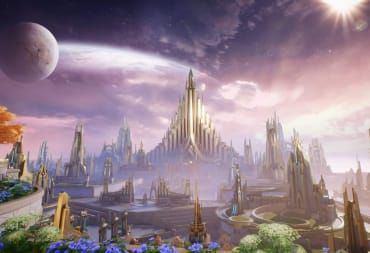The Warhammer Fantasy setting has been a staple in tabletop gaming since time immemorial. I remember hanging out at the local Games Workshop and getting introduced to the hobby by veterans of the game. While I never really took to playing the tabletop game, I was always interested in painting the figurines and reading up on the lore. That remained the case until a friend of mine gave me a code for Total War: Warhammer. As a fan of the Total War franchise and as someone who saw an opportunity to dive into the lore a little more proactively, I promptly pumped a few dozen hours into it. Now we have Total War: Warhammer 2, featuring new factions and characters in a completely new environment that trades in the Old World for the New World.
The story of Total War: Warhammer 2 revolves around the Great Vortex, a gigantic magical maelstrom conjured up by the High Elves to protect the realm against the forces of Chaos. When it falters due to a twin-tailed comet approaching the planet, many factions see it as an opportunity to take the power of the vortex and it for their own nefarious machinations. Taking part in this race against the clock are four races spread out over eight factions: High Elves, Dark Elves, Lizardmen and the Skaven. All of these are new playable races complete with storylines to complete. The story is mainly relayed to you via quest texts and the odd animation after you've completed a ritual. It's not a big thing for me, but I would've liked it if Creative Assembly had used in-game cutscenes (like in the first one) to tell the story instead of the relatively static animations the sequel has.
To win the main campaign, you have to achieve a Vortex Victory by performing a sequence of rituals (and preventing your enemies from doing the same) leading up to a final battle. These rituals are quite costly and require an increasingly larger amount of resources, which can be obtained by completing missions and taking certain settlements that can generate that resource. The inclusion of a story gives the game more of a sense of progression. The game is still as freeform as ever and you can just decide to disregard the story completely, but there is enough of a narrative there to guide players through the game at least once.
[gallery type="slideshow" ids="163249,163251,163250,163296"]
Once you've gathered enough resources, your adepts will start channeling the ritual for ten turns. During this time, Chaos forces slip into your world because of the Vortex's temporarily weakened state. These otherworldly troops will try to attack and raze settlements channeling the ritual, forcing you to recapture them before the channeling is complete. Failure to do so will result in the ritual failing, after which you have to do it all over again. The further along in the sequence you are, the bigger the invading force will be, and the more you are at risk of losing a few developed cities. The AI was staggeringly well-prepared for invading my lands even with the extra armies I trained in preparation. No place was safe, and I had to fight hard to retain (and recapture) the cities Chaos was targeting.
In addition to rituals, each playable faction can periodically use Rites to buff a certain aspect of your empire. Each one of these has specific requirements you need to fulfill before they unlock and, once activated, can change the game dramatically for the duration of the Rite. In its current form, a rework of the system might be the best course of action since I never intently worked on getting the resources as fast as possible, the game just handed it to me as resources would organically accumulate. For a system that can change the course of the campaign, its mechanics don't actually do something interesting outside of giving your faction a buff.
Another new addition is the ability to search empty or razed settlements for treasures. These can either be items you can use to deck out your Lords, or temporary buffs/debuffs that are applied to all your forces. Treasures can also be found at sea at one of the many shipwrecks and sea corpses dotted around the oceans. Ship to ship combat is possible in 2, but you won't be able to do anything besides auto-resolving any encounters you might have on the waves. I would've liked having ocean battles because not being able to use something as cool as the Arks in ship to ship combat seem like a wasted opportunity. It would have been fun to command your fleet while you're trying to gain a foothold in some seaside town. Naval battles aren't even new in the Total War series and I would've really liked to have gotten a polished, improved version of them in Total War: Warhammer 2.
[gallery type="slideshow" ids="163256,163255"]
The sprawling campaign map of Warhammer 2 easily rivals the map size of the first game. There are vast mountain ranges and dense stretches of green foliage nestled in between valleys and hills. From the glaciers of the north to the damp heat of the continent of Lustria, the map is beautifully detailed and full of life, although the textures could have been done a bit better. Performance-wise, I couldn't get the campaign map to run at a stable 60 frames even after tweaking some settings and turning shadows down. The real-time battles ran fine at a stable framerate, so it just seems to be a problem with the campaign map itself and a quick Google search taught me that I'm far from the only one with this problem. It's never unplayably bad, but it can be jerky sometimes without there seeming to be a good reason for it. Total War games have never been known for their optimization, but that doesn't make it any less annoying when the game is taking a performance hit. The game is CPU heavy (like Grand Strategy games tend to be) so be prepared for some performance issues if your CPU is starting to fall behind the curve a little bit.
While you'll be spending a large amount of your time managing your empire on the campaign map, you will also be butting heads with rival factions in epic fantasy warfare. Those real-time skirmishes/sieges/battles still manage to entertain and challenge you, just like every other Total War game has. The enemy AI seems to have taken a class in aggressiveness this time around because it managed to outplay and outfight me more than it has in any other Total War game. It can hold its own during battles, with the harder difficulties especially needing you to think before you act in both the campaign map as well as the battles. Being able to zoom in so close to the action so you can get a sense of the chaos on the frontlines is great. I really liked the new hero units and their spells, which range from supportive to visually impressive and dangerous. The right hero in the right place at the right time can turn the flow of battle, and that's truer than ever in Warhammer 2.
[gallery type="slideshow" ids="163257,163259,163260,163268"]
Starting with this game, you'll be able to capture and hold any settlement on the map. Most of the cities you capture will function normally, while other settlements give the occupant debuffs depending on their race. For instance, some factions don't deal well with the colder climates in the north and vice versa. The basic gameplay is almost identical to Total War: Warhammer. The interface, the methods of outfitting and improving your settlements and armies, diplomacy, how interaction with the map works, it's all exactly the same. This is not necessarily a bad thing since the variety in Total War: Warhammer 2 comes from the different races who all have their own unique mechanics and flavor to them.
The new Skaven race is top of the charts in terms of raw malevolence and cruelty and because this is the grim and dark Warhammer universe, that actually says a lot. This race of anthropomorphized rodents is easily as violent as the Orcs with the added benefit of being smart about their utter ruthlessness. They have a pretty varied roster of units, some of which are cheap cannon fodder used to whittle down your enemy before you send in your big units. Being the sneaky kind, settlements occupied by the Skaven show up as empty on the campaign map, making it possible to easily ambush unsuspecting armies and heroes. This works for their armies, too, which are invisible until an enemy happens to come close to them. This plays into their role within the universe since some surface dwellers think of the Skaven as just a myth. They're a malicious and evil race that'll fight other races as well as their own faction when given the chance. The Skaven also spread their corruption to wherever they decide to settle down. This corruption lowers public order if it gets too high. The other side of the coin is that Skaven corruption gives you access to free Clan Rat units which you can deploy in battles fought in the province the corruption is spreading in thanks to the Menace Below faction trait. So, on one hand, you have to make sure you keep your armies happy enough to not revolt while making sure the place is just infested enough to get you some extra muscle on the battlefield. This can snowball out of control to a point where you effectively have an infinite supply of Clan Rats at your disposal. Vermintide, indeed.
[gallery type="slideshow" ids="163282,163269,163270"]
The Dark Elves are similarly brutal, taking great joy in torturing their enemies and taking survivors of their raids for slaves. Slaves are distributed across your empire, boosting your buildings' gold output. Slaves can be obtained through a variety of different means, but you'll always get the most if you sack enemy cities. You'll need to carefully balance your realm, fight off the Norsca invaders from the Northern wastes and corrupt the Vortex. Dark Elf units range from your typical swordsmen and archers to monsters like Harpies. The Dark Elves also have access to the Black Arks. These are floating cities that can support your armies on land by replenishing lost units or recruiting new ones. These ships can be upgraded to help your troops during land battles by bombarding the enemy from the relative safety of the sea. These Arks can all be upgraded by using the build slots as you would a regular city. Their unit roster consists of powerful units with relatively low amounts of HP, making them glass cannons.
Both the Dark Elves and the Skaven have a loyalty mechanic. The Skaven have loyalty associated with their food mechanic, meaning that Lords will start defecting if you don't supply them and their troops with a steady flow of food. The Dark Elves do not have the food mechanic. They instead have to carefully balance military expansion with domestic politics and management. Loyalty can also be gained by winning battles, doing missions, recruiting new units and by making smart diplomatic moves in one of the many 'dilemmas' the game offers to you every now and then. I liked this system as it forces you to use the armies you have instead of just posting your armies in garrisons to secure your cities. If you let your Lords behind while you're off fighting somewhere else in the world, you may find that a traitor has taken up arms against you in your absence and is now raiding the surrounding countryside and razing your cities.
[gallery type="slideshow" ids="163270,163271,163272"]
The High Elves are de facto allrounders, boasting a host of capable infantry and ranged units designed to be as versatile as possible. They also have several flavors of dragons that you'll be able to recruit mid-game. High Elves are able to pull the strings of diplomacy by using their influence over the court to set your enemies against each other. That's a pretty cool mechanic that I wish would have more meat to it other than give you a binary choice and allowing you to buy superior lords. In its current form, you're basically just choosing two factions you want to like or hate each other more. This also works with you being one of the two, so it's an easy way to increase your relations with surrounding factions. Influence is gained by picking responses to certain situations as they happen, but nowhere does it feel like you're actually pulling some political move. Instead, it feels like a built-in cheat to circumvent the more complex forms of diplomacy altogether, and that doesn't really feel all that fun.
Lastly, we have the Lizardmen. These cold-blooded Mayan analogs are capable of linking together their settlements by using ancient power-lines to empower commandments in provinces they control. Their roster of units has a wide range of monsters on it. While having a huge dinosaur (or more) seems like a good idea for every battle, but these monsters can be provoked, after which they'll go on a frenzy you are powerless to stop. Lizardmen can periodically complete special missions to spawn more powerful versions of their units to give them an edge on the battlefield. Mechanically, the idea that you lose control over your armies because they've gone into a frenzy is pretty interesting, but I found it more frustrating than anything else. Then again, fighting the good fight with Lizards riding on Dinosaurs is still a joy to watch.
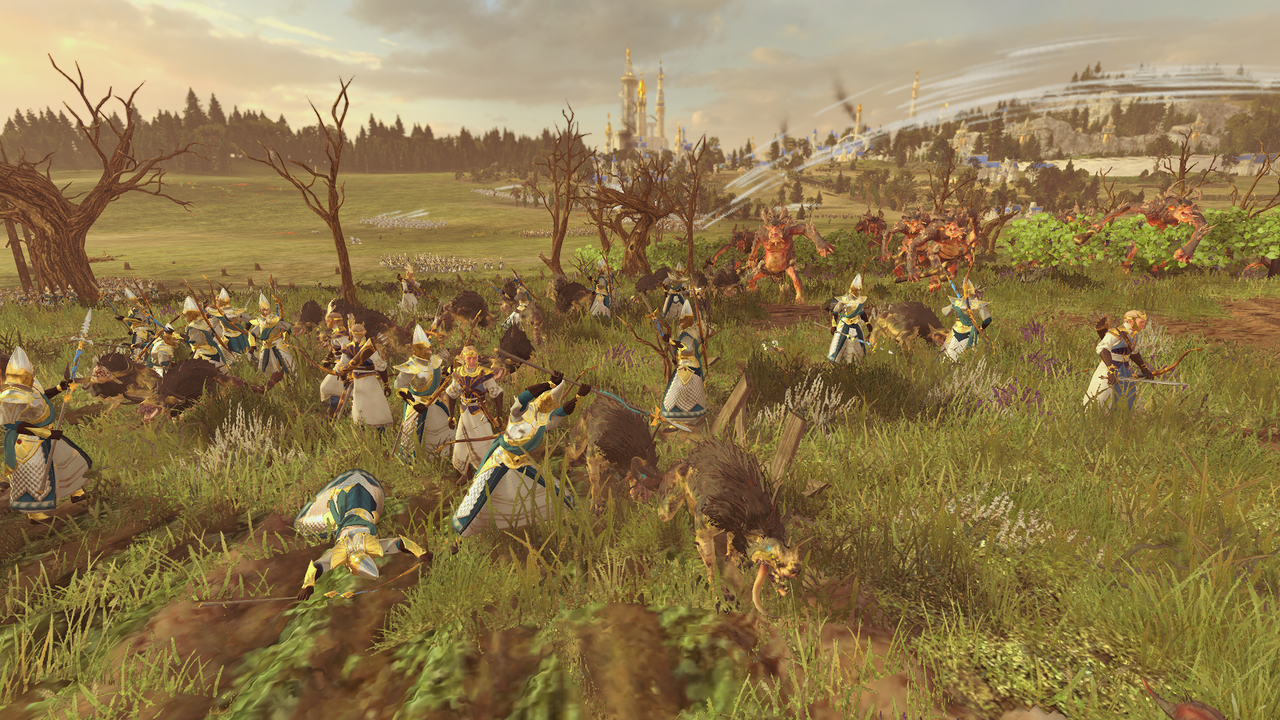
Personally, I really enjoyed playing as the High Elves. They're not the most interesting race in terms of theme and units, but I like dragons and they have a few of those! The runnerup for me would be the Skaven, a race so shifty and evil that they go way beyond the brutal comedic relief the Orks usually are. They did an exceptional job at making the Skaven sound as terrifying as they look, with voice actors spewing lines that sometimes sound painful to make. The Dark Elves offer a little more civilization to go with your evil war fantasies, and the Lizardmen's stable of terrible dinosaurs will satiate even the most bloodthirsty player, although the latter race didn't really click with me as I've explained above. There's a ton of variety in the unit rosters, and figuring out how to play with (and against) the playable races present in Total War: Warhammer 2 will keep you busy for dozens of hours, if not for much longer.
While a lot of mechanics (including talent trees and the like) have been copy-pasted over from Warhammer 1, nowhere does Total War: Warhammer 2 feel like a half step. There is enough new stuff to play with which keeps the experience fun as well as fresh. Chokepoints and new army abilities add a new dimension to smashing thousands of forces against one another in brutal combat. Rogue armies keep you on your toes even in times of peace. The new trait system that awards traits based on your lord's performance can evolve characters in new ways and the focus on a guiding narrative all make for a more polished and compelling experience than that of the older games in the franchise. There are numerous quality of life fixes that make it a more enjoyable game to play you're a returning Total War player, and a more accessible one if you're a player playing a Total War game for the first time thanks to a better-designed tutorial. The game definitely has its problems. Some have to do with faction mechanics (like the political intrigue of the High Elves) and some of them have to do with the game's somewhat spotty performance on lower-mid to low-tier PCs, but none of them detract from the gameplay enough to make me think lesser of it. It's fun for all the same reasons as the older games in the franchise, with the added benefit of fantastical warfare thrown on top. I loved my time with this title, and I think I'll be entertained by it for quite some time to come. Plain and simple, this is the best Total War game released since Total War: Medieval 2.
Our Total War Warhammer 2 review was conducted on PC via Steam using a copy provided by the developer.
Review Summary
A beautiful sequel to an already great franchise innovates in some key ways without changing the game's look and feel too much. There is a lot of content here with the large campaign map and all the different factions vying for control over the New World. The real-time battles are as fun to watch and play as always, and the differences between races force you to approach every campaign differently, to great success.
(Review Policy)Pros
- Huge Map with Tons of Factions
- Varied Race Additions That Play Differently
- No Mid-Game Lull in the Story
Cons
- Spotty Performance
- Rough Texture Quality
- Long Load Times
- Brief Moments of Dumb AI
Have a tip, or want to point out something we missed? Leave a Comment or e-mail us at tips@techraptor.net
